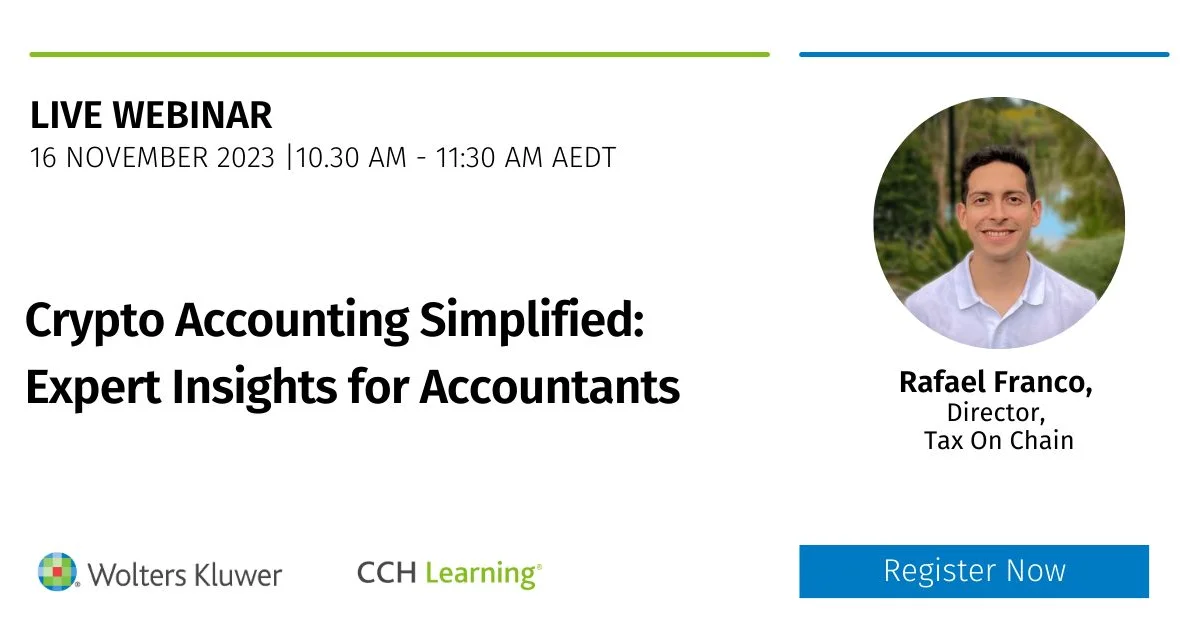Paying more tax than you have to?
While I subscribe to the concept of taxation in so far as a way of funding public goods, I don’t subscribe to paying more tax than I absolutely have to. Kerry Packer said it well in his appearance at the House of Representatives Select Committee on Print Media on 4 November, 1991:
I pay whatever tax I am required to pay under the law, not a penny more, not a penny less… if anybody in this country doesn’t minimise their tax they want their heads read because as a government I can tell you you’re not spending it that well that we should be donating extra.
Disclaimers – this article:
- Is not tax advice, financial advice, legal advice or security advice;
- Is intended for Australian readers but may be relevant to others;
- Focuses on Ethereum but may be relevant to other Ethereum Virtual Machine (EVM) compatible or equivalent blockchains;
- Is not sponsored.
Australia’s income taxation system operates under a marginal tax rate structure for individuals; as they earn more, they progressively pay more in income tax. While there are many issues that can arise, a common issue encountered by many investors in the cryptocurrency space is the cyclical spike and crash in income levels. Left unchecked, this can lead to unexpected spikes in tax from year to year.
While there are many different approaches to optimising your cryptocurrency tax obligations, this article outlines the possible ways to use different investment vehicles to achieve this goal.
Income types – different tools for different jobs
When considering how best to structure your crypto investment holdings, one of many factors to consider is how different types of income can be subject to income tax in different ways.
These include, but are not limited to:
- Capital Gains: Profits made from buying or selling assets are broadly dealt with under the Capital Gain provisions of the Income Tax Assessment Act (ITAA) 1997. Within this context, you can have two main types of Capital Gains:
- Discount: Gains from assets held for more than 12 months before being sold. These gains are eligible for a CGT Discount before being subject to income tax, however different entities have different discount percentages; and
- Other: Gains from assets held for less than 12 months before being sold. These gains are subject the full amount of income tax.
- Ordinary Income: Income generated according to “ordinary concepts”, as defined in ITAA 1997 s6-5(1) (TL;DR – anything earned from any other source that doesn’t fit into the other categories);
- Franked Dividends/Distributions: Generally not relevant to most retail crypto investors, however it may become relevant if you have other investments in traditional markets. These type of income sources may have refundable tax offsets, known as “Franking Credits”, attached to them; and
- Foreign Source income: Again, not relevant to most retail crypto investors unless you have other traditional market investments. These type of income sources may have non-refundable tax offsets, known as “Foreign Tax Credits”, attached to them.
With this in mind, this article will now cover the features, benefits and trade-offs for the following vehicles:
- Companies; and
- Trusts.
Companies
Key Features – TL;DR:
- Key people: Directors, Shareholders (can be the same person/people)
- Separate Legal Entity
- (Non-tax benefit) Asset protection
- (Tax benefit) Ability to retain earnings and flexibility to pay out profits as a dividend to shareholders
- Tax rate is a fixed 30% for every dollar earned in a company (25% if the company meets the definition of a “Base Rate Entity” (BRE) – ignore for the purpose of this article)
- No CGT discount
- Franking credits are not refundable → must be converted into carry-forward losses
When a company may be a beneficial investment vehicle for income tax purposes:
- You have a moderate to high amount of other sources of income in your own name (Salary & Wages, business income, other passive investments), such that your total taxable income consistently falls within the low-middle income tax bracket (currently AUD 45,000 – AUD 120,000) or above, where your individual tax rate reaches 32.5% or over;
- The types of income sources you generate from crypto are largely short-term capital gains and/or ordinary income; and/or
- You don’t have many (if any) family members that you can tax effectively share income with (see trusts below).
When a company may not be a beneficial investment vehicle for income tax purposes:
- The types of income sources you generate from crypto are largely long-term capital gains, where the tax rate at most effectively would be 23.5% (being the top marginal tax rate, currently 47%, less a 50% CGT discount) if it was earned by an individual; and/or
- You have low to no other sources of income in your own name (Salary & Wages, business income, other passive investments), such that your total taxable income consistently falls below the low-middle income tax bracket (currently AUD 45,000 – AUD 120,000) or above, where your individual tax rate is 19% or less.
Trusts
- Key people: Trustees, Settlor, Beneficiaries
- Trustee can be an individual or a company
- Not a separate legal entity → profits must be distributed at the end of each financial year (or trustee pays tax at top marginal tax rate) but losses are retained
- Two main types of trusts:
- Discretionary Trusts (or “Family Trusts”) – Full discretion as to who is entitled to profits; and
- Unit Trusts – Distributed based on unit holdings
- Income types retain their characteristics when distributed to beneficiaries
- Ability to “stream” different types of income to certain beneficiaries
- Discretionary Trusts allow flexible distribution of income from year to year
- Unit Trusts allow a fixed distribution of income from year to year
When a trust may be a beneficial investment vehicle:
- You have family members (or entities – more below) that you would share income with;
- You and/or your family member(s) have low to no other sources of income in your own name (Salary & Wages, business income, other passive investments), such that your total taxable income consistently falls below the low-middle income tax bracket (currently AUD 45,000 – AUD 120,000) or above, where your individual tax rate is 19% or less; and/or
- The types of income sources you generate from crypto are diverse and/or comprise largely of long-term capital gains.
When a trust may not be a beneficial investment vehicle:
- You and your family member(s) have other sources of income in your own names (Salary & Wages, business income, other passive investments), such that your total taxable incomes consistently sit at or above the low-middle income tax bracket (currently AUD 45,000 – AUD 120,000) or above, where your individual tax rate reaches 32.5% or over.
Using layers of investment vehicles
When structuring (or re-structuring) your crypto investments, it’s possible that a combination of these vehicles may be the most optimal structure. A common scenario where this is valuable is when investors have a diverse range of income types, each with varying tax consequences.
Layering of various entities can also help to benefit you regardless of your personal circumstances; specifically whether you have family to share profits with or not.
The example below will help to illustrate this. In each scenario:
- A single individual, an Australian tax resident, earns a Salary of AUD 180,000; and
- Income earned from crypto activity totals AUD 200,000 and consists of:
- Long Term Capital Gains (before discounts) – AUD 100,000;
- Short Term Capital Gains (after losses applied) – AUD 50,000; and
- Ordinary Income (from Staking Rewards) – AUD 50,000.
The only variable in each scenario is who (or what) holds the crypto and therefore earns the income from that crypto activity.
Owned by the individual
In this scenario, where crypto is owned by an individual, the income from crypto activity will added to the individual’s salary. In this case, income from crypto activity is taxed at the highest marginal tax rate, being 45% Income Tax and 2% Medicare Levy (i.e. 47%). They are eligible to use a 50% CGT Discount for the Long Term Capital Gains, resulting in net income from crypto activity being AUD 150,000 and tax of AUD 70,500.
Owned by a trust, no other beneficiaries:
In this scenario, where crypto is owned in a trust and the individual has no other family to distribute income of the trust to, the income of the trust will be distributed to the individual. Because income of a trust holds its properties, it will still be distributed to the individual as AUD 100,000 Long Term Capital Gains and AUD 100,000 Short Term Capital Gains. As such, the outcome will be the same as if the individual held the crypto in their own name. However, if the individual did have someone else to distribute trust income to, this can become increasingly effective.
Owned by a company:
In this scenario, where crypto is owned in a company, the income from crypto activity is taxed in a separate legal entity. The only drawback in this case is that the company will pay tax on the full AUD 200,000 earned during the year, as companies do not receive a CGT Discount for Long Term Capital Gains. However, assuming the company is not a small business entity or base rate entity, tax will be paid at a lower flat rate of 30%, resulting in tax of AUD 60,000. Compared to the previous scenarios, this still represents a tax saving of AUD 10,500.
Profits of the company can then be paid to the individual as a dividend at any time and the tax paid on those profits (known as “Franking Credits”) can be used to offset any future tax obligations on dividends paid.
Owned by a trust, company beneficiary:
In this scenario, crypto is owned in a trust and the individual also established a company for the purpose of receiving trust distributions (colloquially known as a “bucket company”). Not only do trustees have the flexibility to determine how much income to distribute to beneficiaries, they also have the flexibility to determine the types of income to distribute to beneficiaries.
In this case, the optimal distribution of income would be as follows:
- 100% of Long Term Capital Gains to the individual (AUD 100,000, less a 50% CGT Discount);
- 100% of Short Term Capital Gains to the bucket company (AUD 50,000); and
- 100% of Ordinary Income, also to the bucket company (AUD 50,000).
Tax on these distributions would then be as follows:
- Individual – AUD 50,000 x 47% = AUD 23,500
- Company – AUD 100,000 x 30% = AUD 30,000
- Total tax = AUD 53,500
Compared to holding crypto individually or in a trust with no other beneficiaries, this structure would save a total AUD 17,000 in tax, or an additional AUD 6,500 when compared to holding crypto in a company alone.
Additionally, profits distributed to the company can then be paid as a dividend at any time, as set out above.
Other non-tax specific considerations
There are many other reasons to consider how to structure your cryptocurrency holdings including, but not limited to:
- Asset protection – If structured properly, these investment vehicles can be an effective insurance policy of sorts, protecting your assets from being captured as part of litigation or bankruptcy proceedings;
- Risks outside of crypto – Further to the above point, if you (or your spouse) work or operate a business in an industry that has a non-trivial risk of litigation, it is important to carefully consider the key roles in any new structures to ensure that those assets are properly protected;
- Director eligibility (for companies) – If you are an undischarged bankrupt or have been convicted of certain types of offences, you may not be able to act as director of a company under Corporations Act 2001 s206B;
- Family structure – There may be certain family members that you wish to specifically include or exclude from having access to assets you have accumulated; and
- Costs – The upfront and ongoing costs of managing assets through these investment vehicles may outweigh the tax benefits that you can expect compared to holding them in your own name.
Closing thoughts – talk to your crypto tax professional
As always, timing is everything as well. If you are just entering the crypto investment arena, choosing and executing the most ideal structure for your investments will be relatively straightforward. However, if you already hold crypto assets and plan to move them to a new structure, you may need to consider the timing of your execution.
While there are some ways to defer your taxing points and rollover assets into a certain structure, not all of them may be applicable to your circumstances. In the absence of this, assets transferred to a new structure are taken to be sold at market value at the time of the transfer (see Market Value Substitution Rule, as set out in Income Tax Assessment Act 1997 s116-30(1)). This is where timing is key. You may be able to harvest crypto tax losses if you time your transfer in the middle of a bear market. Conversely, you could be triggering significant capital gains at the pico-top of a bull market. You may also want to consider transferring portions of your portfolio across multiple financial years to average out the potential crypto tax burden.
The above list is also not exhaustive by any means. These and many other potential considerations not mentioned in this article can vary in complexity and impact from person to person. As such, it would be prudent for you to collaborate with your cryptocurrency tax, legal and/or financial advisors to ensure that you are able to move forward in most effective way possible.



